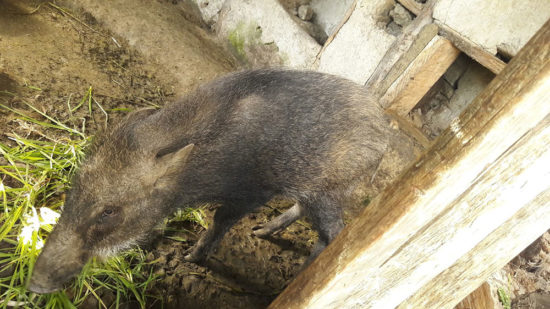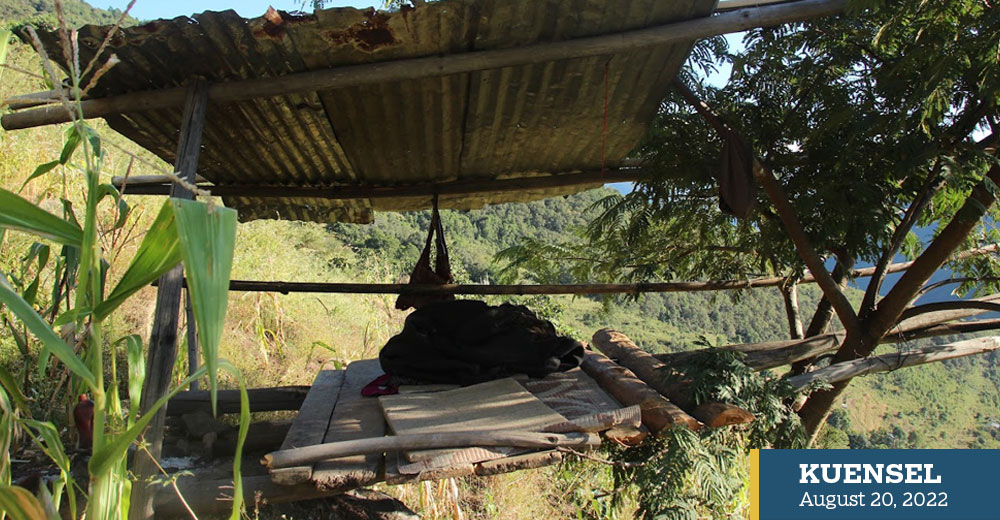It has been 14 years since the HWC strategy document was published, and the wild pig problem appears to be increasing. Our conservationists appear to be taking a cautious approach to the wild pig problem. But the economic loss brought about by crop loss undoubtedly discourages our farmers from continuing farming, let alone our youths returning to the village to pursue farming.
“…the Government care more about wild animals than us…” if you ever spend some quality time trying to understand the feelings of some of our farmers, it is certain that you will hear similar sentiments. Imagine, a cow or farming as a sole household income source. For such a household, losing a cow or crops to wild animals will devastate the family financially and emotionally.
The human-wildlife conflict (HWC) literature agrees that such negative attitudes of our farmers toward conservation are due to the loss of resource use rights. Further, existing literature recognises that wild animals threaten farmers’ daily sustenance in and adjacent to Protected Areas (PA) through livestock depredation, crop damage, and their lives. The HWC is also affecting the government’s objective of achieving national food self-sufficiency and jeopardising the future of Bhutan’s conservation programs.
Contrary to what our farmers think, the relevant government agencies have been pursuing various programs and campaigns to reduce livestock depredation and crop damage by wild animals. One of the earliest recollected campaigns was the mass poisoning of dholes resulting from persistent livestock depredation in the 1980s. Although the mass poisoning may have reduced livestock kill, it is perceived to have contributed to the increase in the wild pig population, which became a new problem for our farmers. Poisoning dholes is probably the classic case of disrupting ecological balance without an adequate ‘scientific’ understanding.
Here, I write about the voices of our farmers. I studied Gungtong and its links to HWC in Bhutan as part of my research. I interviewed 510 households, including 79 households identified as Gungtong by Gewogs. I write ‘identified as Gungtong’ as the definition of Gungtong is not comparable across Gewogs, which is another topic for discussion for some other time.
A significant proportion of households observed to have experienced increasing HWC events in the last decade. Household participants attributed several reasons for the increase but the most frequently mentioned were:
1. Increase in forest cover with the ban on shifting cultivation and several tree plantations campaigns;
2. Strict forest policies, prohibiting hunting animals;
3. Religious sentiments

These perceptions were consistent with the WWF’s HWC SAFE strategy published in 2016. Bhutan National Human-wildlife Conflict Management Strategy (HWC strategy), published in 2008 by the Department of Forests, has an entire chapter devoted to human-wild pig conflict management and states that “in Bhutan, the wild pig is often described as farmer’s enemy number one.” In addition, according to the data maintained by the Department of Agriculture, 75% of the crop loss [420 metric tons] from 2011-2015 in nine districts was attributed to wild pigs. This is significant and calls for a radical intervention based on a sound scientific study to minimise crop damage by wild pigs. The household representatives believe that the wild pig population had increased so much that there should be some policies allowing hunting them.
An increase in the incidences of HWC events has far-reaching implications for the country, let alone our farmers, even our government is aware of that. Therefore, the Ministry of Agriculture and Forests has been providing several resources to our farmers, such as supplying improved livestock breed, cash compensation for animals killed by tigers, crop insurances, encouraging stall feeding of livestock, subsidised fertilisers and seeds, etc. The government also initiated electric fencing as a new ‘solution’ to reduce HWC.
However, many of the afore-mentioned government interventions are short-term solutions and not sustainable. For example, the perceived benefit of electric fencing is mixed. Some households claimed that they were able to get a good night’s sleep, and the harvest increased after the electric fencing. However, electric fencing is perceived to push wild animals to fields of those households without the same. In addition, it is not feasible to fence all farmlands. Moreover, the electric fences require intensive after-care to ensure its benefits for a longer duration.
Reverting to hunting wild pigs, the HWC strategy identified allowing interested people to hunt wild pigs under licenses and permission. However, it is not certain if this strategy was ever conveyed to our farmers. Instead, when the previous government [2013 – 2018] encouraged farmers to kill wild pigs, conservationists expressed their concerns, possibly indicating that conservationists themselves were not clear about the strategy.
In both scenarios: conservationists identifying controlled wild pig hunting and expressing concerns when the government encouraged farmers to hunt were based on assumptions. Assumptions do not help, and it is about time for Bhutan to invest in understanding the population of wild pigs and its predators. If we do not invest in measures to help our farmers grow our food in peace, we cannot expect to achieve food self-sufficiency.
Though there is evidence of controlled hunting of wild pigs reducing conflict in other countries, Bhutan may not afford to follow the same approach. Instead, we should invest in understanding the socio-ecological dynamics of wild pigs and other lesser-known species. We have justified the need to understand charismatic species and invested much of our resources. There is no disagreement that understanding the ecology and population of an apex predator is important, and I believe we should continue. Still, we cannot afford to neglect other species, which are detrimental to the nation’s food self-sufficiency.
Taken together, it is evident that many factors should be considered to minimise human-wild pig conflict. It has been 14 years since the HWC strategy document was published, and the wild pig problem appears to be increasing. Our conservationists appear to be taking a cautious approach to the wild pig problem. But the economic loss brought about by crop loss undoubtedly discourages our farmers from continuing farming, let alone our youths returning to the village to pursue farming. I found that about 10% of the 387 households lost 3 – 6 months’ worth of food stock to wild animals annually from 2017 – 2019. Again, wild pig was reported to be the most destructive to croplands, followed by the monkey, barking deer and porcupine.
I’ve always wondered where we have collectively failed our farmers. In a desperate attempt to protect their crops from wild animals, some resort to illegally connecting live electric currents to fencing wires. Such a desperate measure has also resulted in few human lives lost, which is surprisingly not documented. Further, some set traps and use poisoned arrows indiscriminately, endangering human lives as well.
If we do not invest in studying wild pigs and intervene now, it is only a matter of time before our rural areas will be deserted. Our food self-sufficiency goal will remain a distant dream, and our conservation achievements will be at the expense of our farmers’ livelihood. Though HWC strategy recognises that rural livelihoods and conservation are inseparably linked and states, “If conservation efforts are to succeed, then HWC must be reduced,” it appears to have remained an ideology. Our conservationists must take a giant leap to contribute to our national food self-sufficiency. Now is the time we remind ourselves that the priority for our farmers is to have food on their plates, which we, as conservationists, academics or government officials, are perhaps failing to understand.
Sangay Wangchuk is a former researcher for the Ugyen Wangchuck Institute for Conservation and Environment Research in Bhutan. At present, he is studying at Charles Sturt University, Australia. He is also a freelance researcher and tweets at @SangayWk.

This series is sponsored by Ecotourism Project “Mainstreaming Biodiversity Conservation into the Tourism Sector in Bhutan” funded by GEF-UNDP through the Tourism Council of Bhutan, RGoB.


